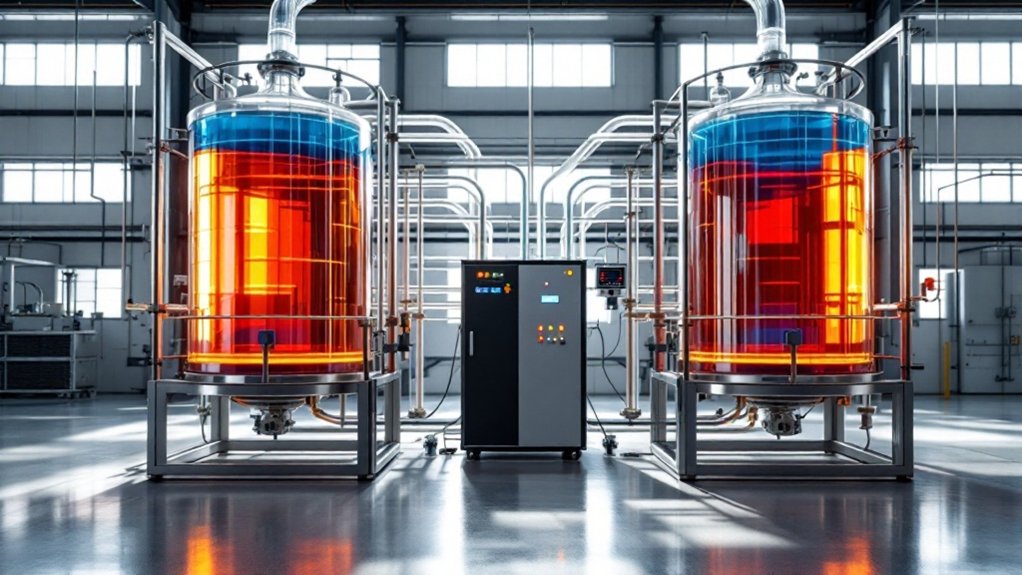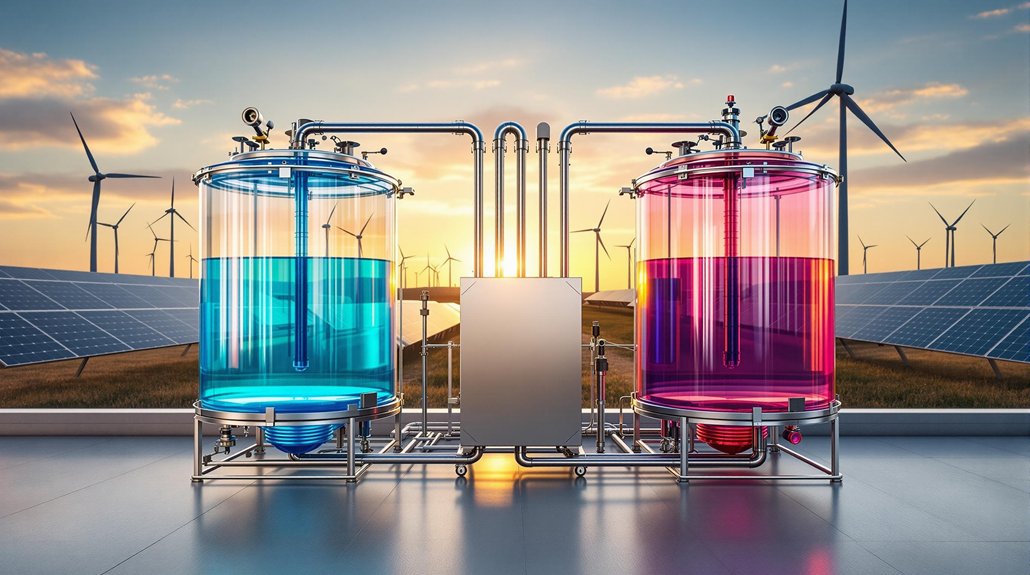Flow batteries are shaking up the energy storage game with their unique liquid electrolyte design. Unlike traditional batteries, these systems pump charged fluids through electrochemical cells, enabling massive storage potential for renewable power. With a 20+ year lifespan and non-flammable chemistry, they’re perfect for grid-scale applications. Sure, they’re not as energy-dense as lithium-ion, but their market value is rocketing from $344.7M to $1.1B by 2029. The deeper story of flow batteries reveals an even more compelling solution.

Flow batteries are revolutionizing the world of energy storage, and it’s about time. These aren’t your grandfather’s batteries – they’re entirely different beasts, using liquid electrolytes stored in separate tanks and pumped through an electrochemical cell where the magic happens. A membrane keeps the positive and negative electrolytes apart, like a chemical referee in an electron boxing match. The ion transfer process enables current to flow through an external circuit while maintaining separation.
What makes these systems so special? For starters, they last forever. Well, not literally forever, but 20+ years is pretty close in battery terms. And unlike those temperamental lithium-ion batteries that slowly lose their juice, flow batteries keep going strong without degradation. Plus, they’re about as likely to catch fire as a wet sponge, thanks to their aqueous electrolytes. The non-flammable electrolytes make these systems exceptionally safe for large-scale installations.
The global market is taking notice. At $344.7 million in 2023, it’s set to explode to $1.1 billion by 2029. That’s a growth rate that would make most tech startups jealous. Renewable energy projects are snatching these systems up like hot cakes, using them for everything from grid storage to keeping data centers running when the lights go out. These systems enable energy arbitrage opportunities, allowing utilities to purchase power when prices are low and sell it when demand peaks.
Sure, they’re not perfect. The energy density is lower than lithium-ion batteries, and the upfront costs can make your wallet cry. The systems are complex, with pumps that need power and maintenance that requires more than just a screwdriver and good intentions. But hey, nothing worth having comes easy.
Scientists and engineers aren’t sitting still, though. They’re cooking up new electrolyte recipes to pack more punch into every gallon, developing membranes that keep the chemistry where it belongs, and even bringing artificial intelligence into the mix.
It’s not just about making better batteries – it’s about creating sustainable energy solutions that actually work in the real world. And flow batteries, with their scalable design and long-lasting performance, are proving they’re up to the challenge.








